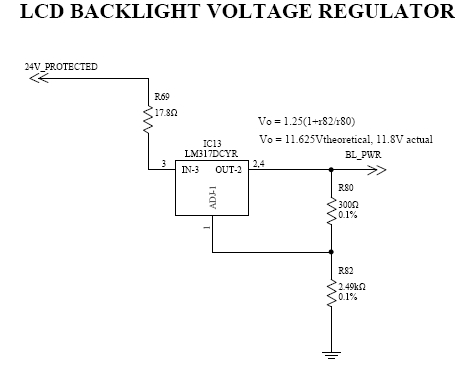Hello,
I am looking at an old circuit that was used to power an LED backlight for a display. The concept is to use one LM317 as a voltage regulator to regulate 24V to 11.8V. After that the voltage is fed into another LM317 acting as a current regulator to feed 200mA at 9.3V to the backlight circuit. After investigating the current draw from the display, the current is very low, closer to 80mA. Should we be using a different circuit to drive the backlight, and if this circuit is ok to use, what should I be looking at as the cause for the low current output.



